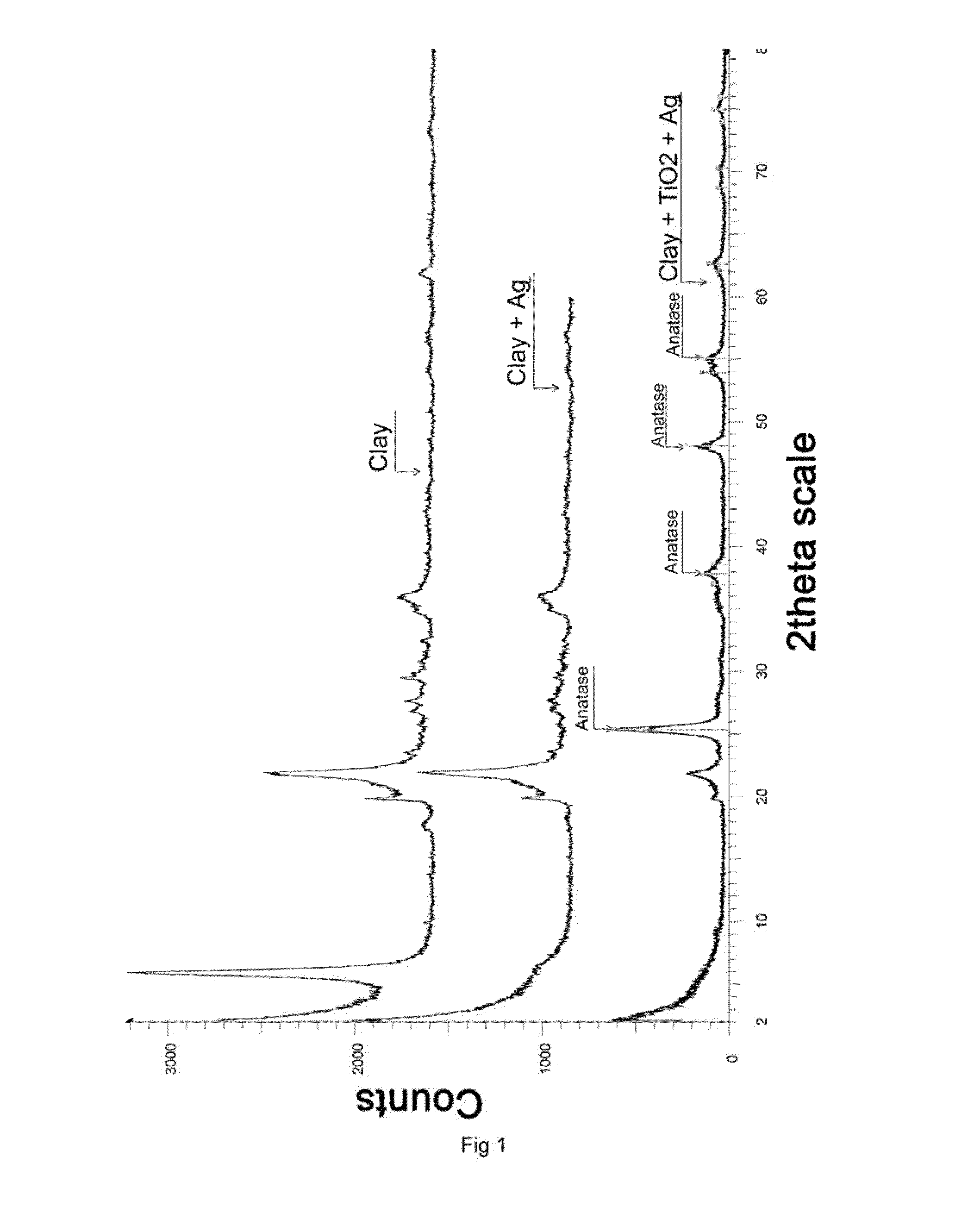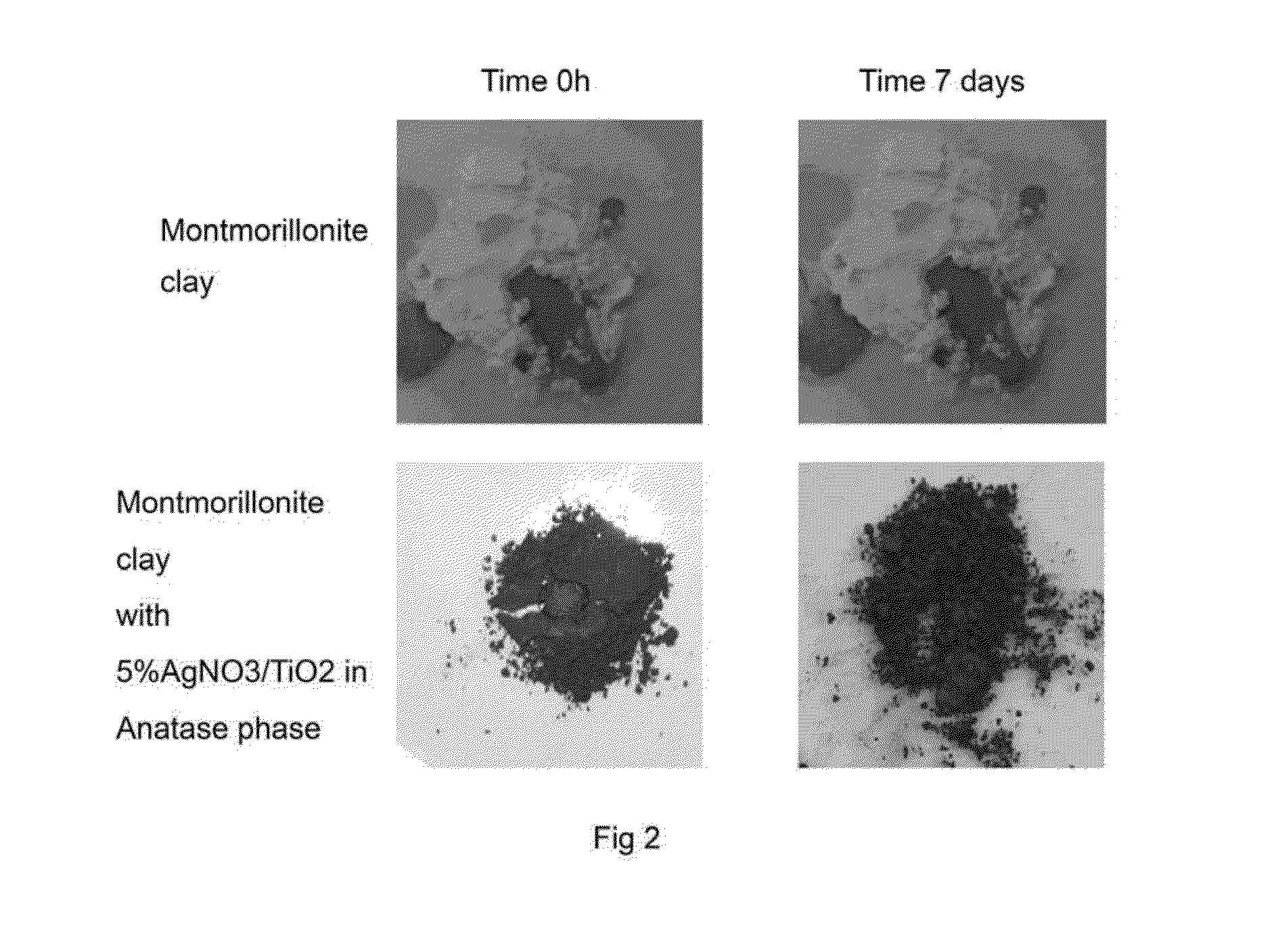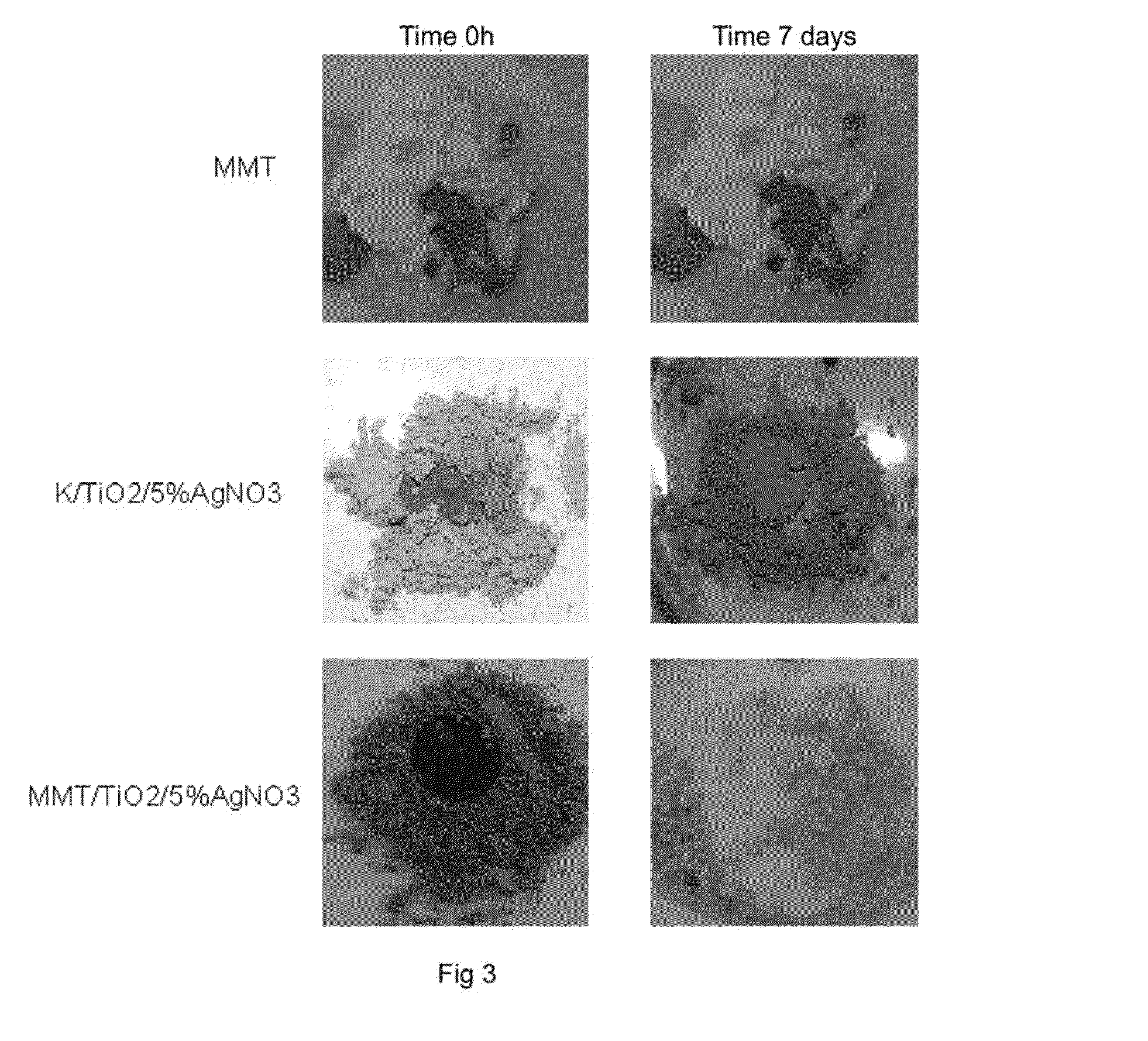Nanocomposite materials based on metal oxides having multi-functional properties
a technology of metal oxides and nanocomposite materials, applied in the field of polymers, can solve the problems that traditional conservation methods such as thermal treatment, irradiation, salt addition, and packaging in modified atmospheres cannot be applied to certain types of food, and no specific design has been published
- Summary
- Abstract
- Description
- Claims
- Application Information
AI Technical Summary
Benefits of technology
Problems solved by technology
Method used
Image
Examples
example 1
[0203]Synthesis and Intercalation of Titanium Oxide in Montmorillonite-Type Clays Modified with 5% by Mass of Silver Nitrate and Its Later Calcination at 500° C. for 1 H Obtaining the Anatase Phase of TiO2.
[0204]Initially, the clay already modified with 5% AgNO3 was dispersed in isopropanol, in ambient conditions, at a ratio of 10 g of clay per 100 g of solvent, and 70 g of Titanium IV Isopropylate (TPT) were added to the dispersion. The dispersion was stirred for 5 min; 18 g of H2O were added, where the gelation in ambient conditions was observed; subsequently, it was dried at 60° C. for 24 h and calcined at 500° C. for 1 h.
[0205]The clay obtained was characterized by X-ray diffraction (FIG. 1) and by X-ray fluorescence (Table 2). The diffractograms of FIG. 1 demonstrate that the modifying agents (silver and titanium oxide particles) and the thermal treatment have caused a disorganization of the layers of clay indicated by the disappearance of the base peak characteristic of the un...
example 2
e Example)
[0208]Synthesis And Intercalation of Titanium Oxide in Montmorillonite-Type and Kaolinite-Type Clays Calcined at 500° C. for 1 H Obtaining the Anatase Phase of TiO2 and Subsequently Modified with 5% by Mass of Silver Nitrate.
[0209]The montmorillonite and kaolinite clays (treated with dimethylsulfoxide) are suspended in isopropanol with a ratio of 10 g of clay in 100 ml of solvent. 70 g of Titanium IV Isopropylate (TPT) is added to the dispersion. The dispersion was stirred for 5 min; 18 g of H2O was added, where the gelation in ambient conditions was observed; subsequently, it was dried at 60° C. for 24 h and calcined at 500° C. for 1 h. Finally, they were modified with 5% silver nitrate, in ambient conditions, at a ratio of 1 g of AgNO3 per 100 ml of H2O and 20 g of the calcined clay. The dispersion was maintained in reflux for 6 hours at 70° C. Finally it was filtered by suction vacuum and dried at 70° C.
[0210]The photocatalytic capacity was determined of this clay conta...
example 3
e Example)
[0212]Development of Nanocomposites Based on PVA and LDPE and Clays Modified with Titanium and Silver and Clays Modified with Titanium and Cerium.
[0213]PVA films were prepared with a thickness of around 100 μm by the casting method, using water as solvent. The weight proportion of clay is 10% with respect to the polymer. The clay was added to the water, it was dispersed with the aid of ultraturrax and the proportional part of PVA was added. The solution was stirred at 70° C. for 2 hours. Subsequently, the casting was performed in Petri dish, obtaining the films by evaporation of the solvent (water) after 24 hours.
[0214]The LDPE films were prepared by melt mixing in an internal mixer and later pressing. The processing conditions were 150° C., 100 rpm and 5 min.
[0215]The clays used for this study were prepared following the process of Example 1 and the process of Example 5.
[0216]The dispersion was studied of these clays modified with titanium and silver, observing good morph...
PUM
| Property | Measurement | Unit |
|---|---|---|
| Temperature | aaaaa | aaaaa |
| Length | aaaaa | aaaaa |
| Length | aaaaa | aaaaa |
Abstract
Description
Claims
Application Information
 Login to View More
Login to View More - R&D
- Intellectual Property
- Life Sciences
- Materials
- Tech Scout
- Unparalleled Data Quality
- Higher Quality Content
- 60% Fewer Hallucinations
Browse by: Latest US Patents, China's latest patents, Technical Efficacy Thesaurus, Application Domain, Technology Topic, Popular Technical Reports.
© 2025 PatSnap. All rights reserved.Legal|Privacy policy|Modern Slavery Act Transparency Statement|Sitemap|About US| Contact US: help@patsnap.com



